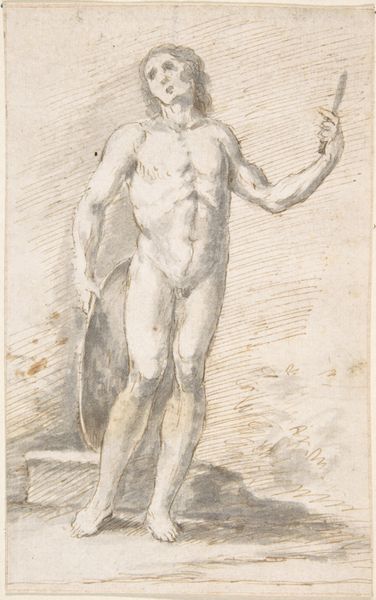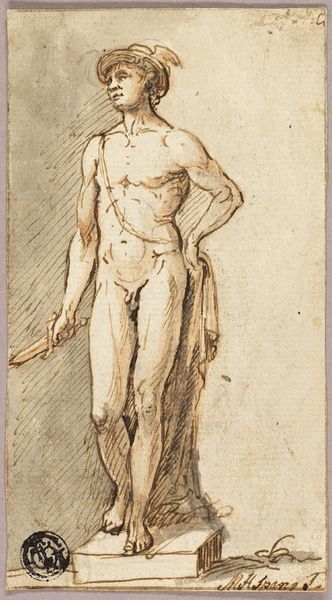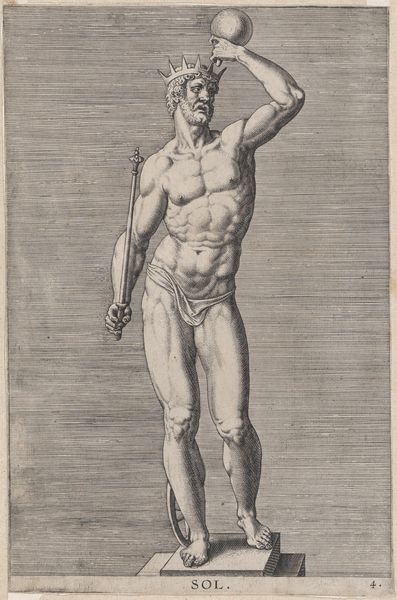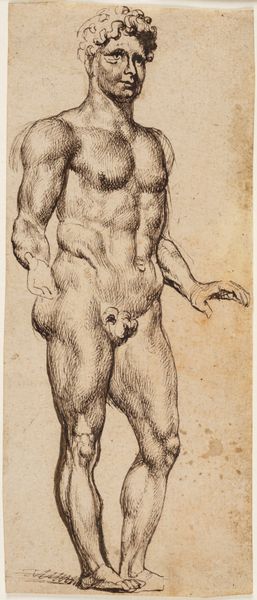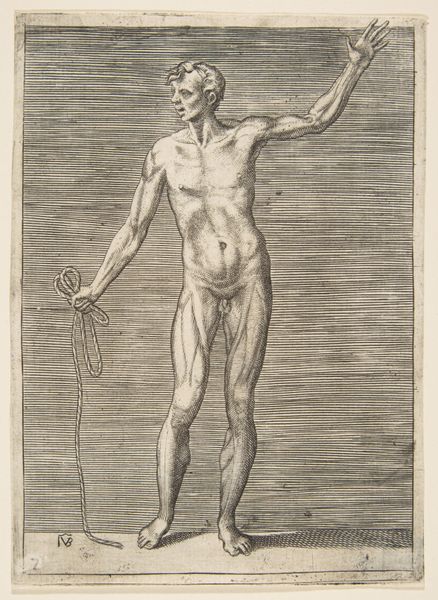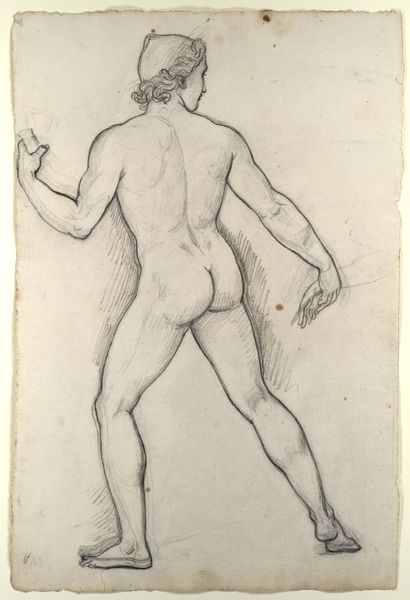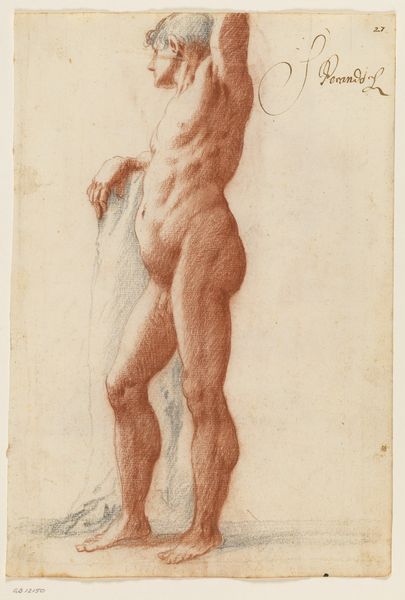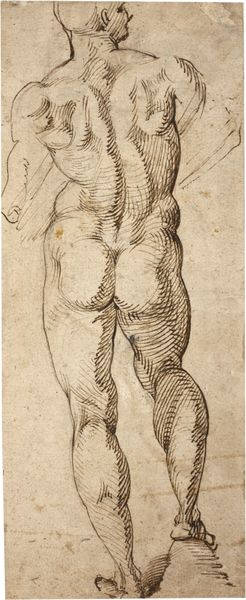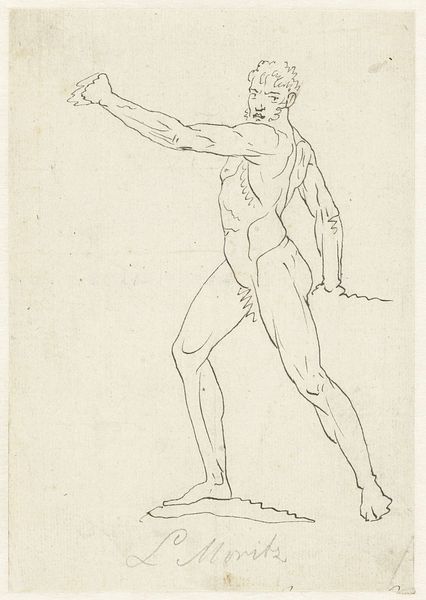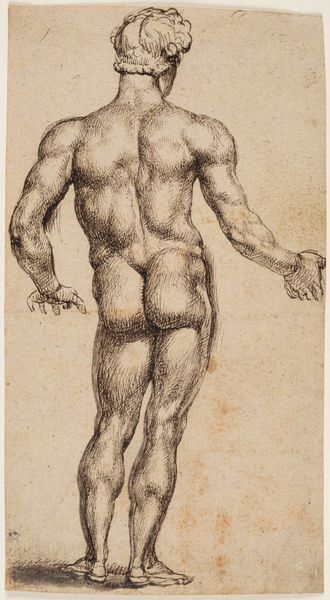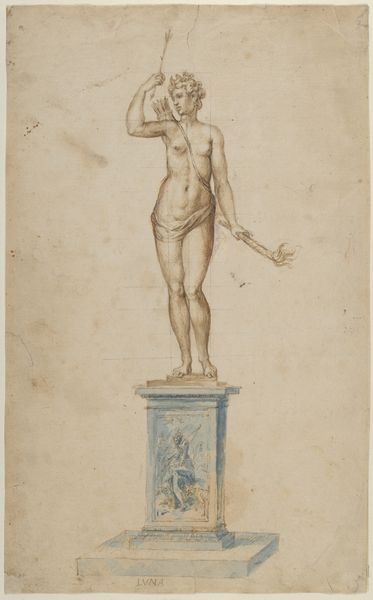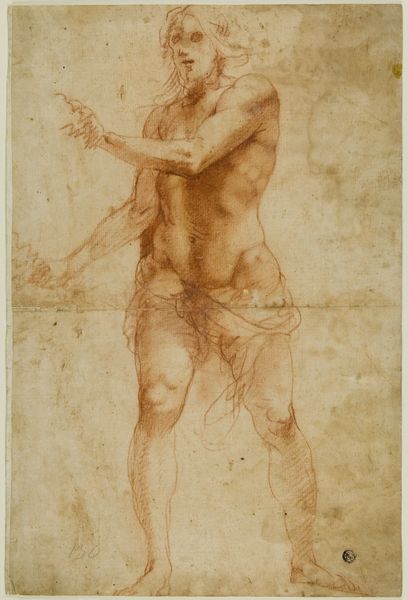
drawing, print, paper, ink, chalk
#
drawing
# print
#
charcoal drawing
#
figuration
#
paper
#
11_renaissance
#
ink
#
chalk
#
academic-art
#
nude
Dimensions: 256 × 193 mm
Copyright: Public Domain
Curator: Here we have "Flayed Man," a drawing and print that dates from around 1600 to 1625, attributed to the Circle of Cigoli, and residing here at The Art Institute of Chicago. It's crafted with ink, chalk, and charcoal on paper. What strikes you initially? Editor: Well, the visceral rawness is hard to ignore. The exposed musculature, the almost detached arm… It feels incredibly vulnerable and yet strangely powerful. There is something immediate about the image and, to be honest, discomforting. Curator: That discomfort is precisely what these anatomical studies often aimed to evoke. In the academic art tradition, depictions of flayed figures, or écorchés, were crucial for artists to understand the human form. They merge science with artistic representation, becoming incredibly popular in workshops. Editor: So, less about portraying an individual's suffering and more about dissecting and mastering the body as a form, right? Yet it’s impossible not to read into the image narratives of power and pain, especially knowing how marginalized bodies have historically been subject to scrutiny and control. Does the history of anatomy ever take this into account, in the context of social justice? Curator: Absolutely. The socio-political dimensions of these studies cannot be overlooked. We have to ask about the power dynamics inherent in looking, in dissection, and in the display of the human body. Was it medical science, or anatomical curiosity that lead the artist in that period? Editor: I think the tension lies in its strange beauty. The artist is clearly skilled, rendering the human body with impressive knowledge, yet the subject matter inherently carries themes of violence, exposure, and mortality. Curator: The Renaissance saw an intensified interest in classical forms and anatomical precision. But to your point, the ethics of representation always come into play. Who is being represented, and to what end? It prompts critical self-reflection, no? Editor: Yes, absolutely. It’s a potent reminder of art's capacity to not just reflect reality, but also shape it, reinforce biases, and invite new conversations. Curator: This exploration makes viewing something like this richer; that there is room for multiple points of access and interpretation. Editor: Agreed, it gives you much to think about long after you leave it.
Comments
No comments
Be the first to comment and join the conversation on the ultimate creative platform.
